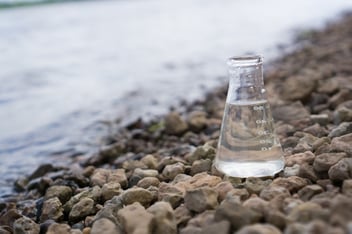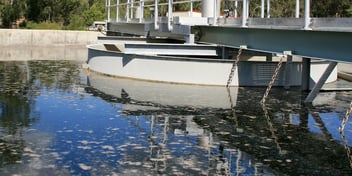Has the solution for filtering out microplastics been hiding in plain sight?
They’re in nearly everything: toothpaste, face wash, clothes, fertilisers. Microplastics have a way of sneaking through conventional treatment systems, but an engineer has found a novel way of removing them from wastewater using existing technology.
Wilson Xu, a mechanical engineer with GHD, was investigating wastewater treatment plant (WWTP) sludge degritting technology when he came to the conclusion that high frequency vibrating screens (HFVS) could be utilised at inlet works to not only remove grit, but microplastics too.
“As a side effect of implementing something that targets materials that tiny – like grit – you inadvertently remove a lot of other stuff as well, including microbeads,” said XU, who will present his findings at the upcoming Ozwater’17 conference in Sydney.
HFVS units are commonly used in the minerals processing industry for primary screening and classification to separate slurry feeds containing solid and crushed ores. They're effective for separating feeds down to 74μm. Xu believed the technology would translate well to the water industry.
“I started my career in the mining industry as a mechanical engineer and I looked at mostly mechanical equipment such as classifiers and pumps; I've taken that knowledge and come across to water. It's very similar, just different smells,” he said.
HFVS units could have a number of advantages over other technological solutions for addressing both the grit and microbead problems, Xu said.
“This jumped out at me because the screen component is a passive technology. There are a lot of other systems where you're forcing things through a screening mechanism, but these typically have a high chance of getting blinded,” he said.
“Whereas this unit is so simple: it's essentially a fine mesh screen that sewage is falling through and it has hydrocyclones after the mesh, which are very good at targeting specific materials.”
Xu said the HFVS units could be tuned to filter out microbeads.
“They're mostly made out of polyethylene so you know the exact characteristics of the material that you're trying to target. You know their density, you know their size,” Xu said.
Not only would applying the technology in this way help stem the alarming influx of microplastics into our waterways, but there were also direct benefits for WWTPs.
“Based on information from plants that operate these units overseas, we're expecting extraction rates of up to 88% of grit. That's where you will see your payback,” he said.
“With a lot of process tanks such as digesters, you typically have a lot of issues with grit settlement taking up volume.
“And in a WWTP, how well your treatment plant operates is based on taking as much of the non-organic material out at the very start of the process.”
Curious about how microplastics will continue to affect our water resources? There will be a special stream on waterway health at the upcoming Ozwater’17 conference in Sydney. To learn more and to register, click here.
Read more about microplastics and other emerging chemicals in the February issue of Current magazine.
Related podcast:
https://omny.fm/shows/australianwater/wilson-xu-on-detoxing-our-waterways


